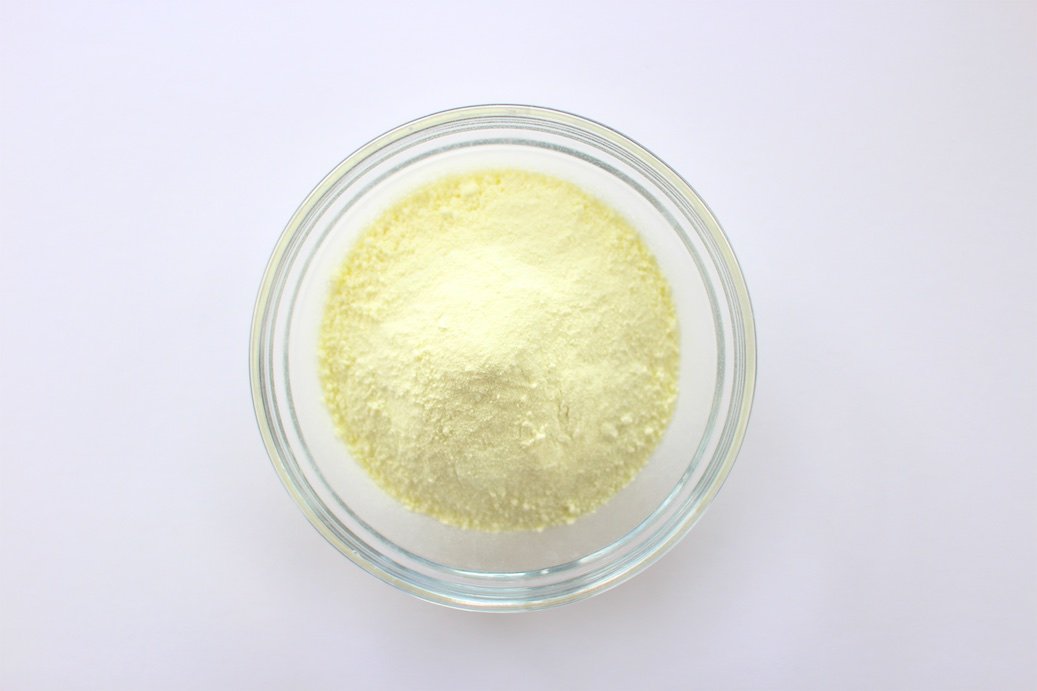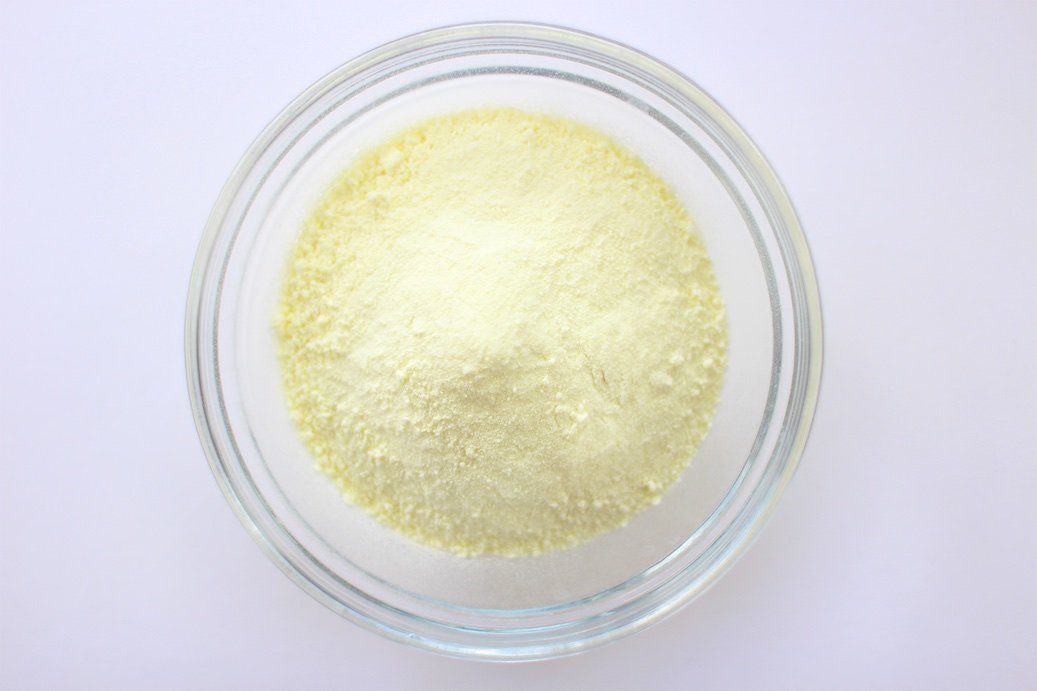PROTEIN IN ICE CREAM
6 MINUTE READ  Ice cream is comprised of a mixture of air, water, milk fat, milk solids-not-fat (MSNF) (the lactose, proteins, minerals, water-soluble vitamins, enzymes, and some minor constituents), sweeteners, stabilisers, emulsifiers, and flavours (Goff & Hartel 2013). In this post, we'll be looking at the role of protein in ice cream.
Ice cream is comprised of a mixture of air, water, milk fat, milk solids-not-fat (MSNF) (the lactose, proteins, minerals, water-soluble vitamins, enzymes, and some minor constituents), sweeteners, stabilisers, emulsifiers, and flavours (Goff & Hartel 2013). In this post, we'll be looking at the role of protein in ice cream.
YOU MIGHT ALSO LIKE THE FOLLOWING POSTS:
- Cuisinart ICE-100 Compressor Ice Cream and Gelato Maker - Review
- Partial coalescence of the ice cream fat emulsion
- Why does ice cream melt?
- Ice crystal formation and growth in ice cream
Milk proteins are present in ice cream as part of the MSNF, which has traditionally been supplied by cream and milk, condensed milk, and/or skimmed milk powder (Goff 2008, 2015). They are divided into caseins and whey proteins, with caseins comprising about 80% of the total protein of milk and the remaining 20% comprising of whey protein (Fox & McSweeney, 1998). Whey proteins are comprised primarily of β-lactalbumin (50%) and α-lactalbumin (20%) (Smith & Campbell, 2007).
Milk proteins contribute three important functional roles to ice cream that can be divided into three categories: emulsification, aeration, and solution behaviour (Goff, 2015).
1. EMULSIFICATION
1.1. EMULSIFICATION OF THE FAT PHASE
Ice cream is an oil-in-water emulsion in which an oil phase, usually consisting of milk fat, is dispersed into a continuous aqueous phase (Fredrick et al., 2010). Emulsions are thermodynamically unstable, meaning that the oil and water will separate due to high interfacial tension between oil and water surfaces.
Immediately following homogenisation, where the fat phase is broken down into numerous small droplets, proteins quickly adsorb to the surface of the small fat droplets, forming a membrane around them. This membrane reduces the interfacial tension between the oil and water surfaces, stabilising the fat droplets and preventing them from coming together (Dickenson, 2003; Goff, 1997).
1.2. PROMOTION OF PARTIAL COALESCENCE OF THE FAT DROPLETS
A considerable amount of the proteins adsorbed to the surface of the small fat droplets are then displaced by added emulsifiers during the ageing stage, where the ice cream mix is aged at 4°C (39.2°F) for a minimum of 4 hours, rendering the fat globules susceptible to partial coalescence (the irreversible connection between fat globules). An ice cream emulsion should be stable prior to freezing but unstable enough so that partial coalescence occurs during the dynamic freezing stage, where the ice cream mix is frozen whilst being agitated to incorporate air (Goff, 1997). Partially coalesced fat globules are crucial for the development of smooth texture and resistance to meltdown (Goff, 1997).
An understanding of the protein-emulsifier interactions at the fat interface is critical to promote the optimal level of partial coalescence during freezing. Excessive protein or insufficient emulsifier can render the emulsion too stable, resulting in reduced rates of partial coalescence.
2. AERATION
Ice cream is generally aerated and characterised as a frozen foam. Proteins contribute both to the formation of the foam and to its stabilisation, an important factor for overall structure and structural stability (Turan et al. 1999; Pelan et al., 1997; Zhang and Goff, 2004, 2005).
2.1. FOAM FORMATION
During dynamic freezing, air is whipped into the ice cream mix by the folding and mixing action of the rotating dasher and scraper blades. Air bubbles, or air cells, start out as large entities but are continually reduced in size by the shear stress (the imposed force) of the rotating dasher and scraper blades (Goff & Hartel, 2013). These air bubbles are thought to contribute to the sensory perception of smoothness, with smaller dispersed air cells producing a creamier mouthfeel during consumption (Goff, 2002; Eisner et al., 2005). Milk proteins are well known for their foaming properties (Xinyi et al., 2010) and therefore contribute to the formation of the initial air bubbles in the mix (Goff & Hartel, 2013).
2.2. FOAM STABILISATION
The small, newly formed air bubbles are not stable and need to be stabilised to prevent them from collapsing. Proteins interact with the added emulsifiers and partially coalescing fat and adsorb to the air interface to stabilise the air bubbles from rapid collapse (Pelan et al., 1997).
3. SOLUTION BEHAVIOUR
During freezing, not all of the water in an ice cream mix is frozen. The unfrozen water contains all the dissolved components, including sugars, salts, some proteins, and some stabilisers, and it is this unfrozen serum phase that holds the entire structure together (Goff & Hartel, 2013).
The water-holding capacity of the proteins dispersed or dissolved in the unfrozen phase leads to increased mix viscosity (a thicker ice cream mix), which imparts beneficial body and texture, increases the meltdown time of ice cream, and contributes to reduced iciness (Schmidt et al., 1993; Alvarez et al., 2005; Patel et al., 2006; Goff 2008).
4. ICE CRYSTALLISATION
Ice crystal size is a critical factor in the development of smooth and creamy ice cream (Donhowe et al. 1991). Smooth and creamy ice cream requires the majority of ice crystals to be small, around 10 to 20 µm in size. If many crystals are larger than this, the ice cream will be perceived as being coarse or icy (Drewett & Hartel, 2007; Goff & Hartel, 2013). Ice crystals are formed during the dynamic freezing stage and grow during the static freezing stage, where the partially frozen ice cream is hardened without agitation in a freezer.
Proteins play a role in minimising ice crystal growth by reducing rates of ice recrystallisation (a change in the size and shape of individual crystals) during the static freezing stage. Patel et al. (2006) showed that increased protein content, using either milk protein concentrates (MPCs) or whey protein concentrates (WPCs), lead to smaller ice crystal size and firmer texture. After one week of storage, overall texture acceptance was also more desirable for ice creams with increased protein.
I hope that helps. I'd be happy to answer any questions so do get in touch and say hi! Ruben :)
REFERENCES
Alvarez, V. B., Wolters, C. L., Vodovotz, Y., and Ji, T., 2005. Physical properties of ice cream containing milk protein concentrates. Journal of Dairy Science. 88:862–871.
Dickinson, E., 2003. Interfacial, emulsifying, and foaming properties of milk proteins. In P.,. F. Fox & P. L. H. McSweeney (Eds), Advanced dairy chemistry: proteins part B (3rd ed), Bol. 1, pp. 1229-1260. New York: Springer.
Donhowe, D. P., Hartel R. W., and Bradley R.L., 1991. Determination of ice crystal size distributions in frozen desserts. Journal of Dairy Science. 74.
Drewett, E. M., & Hartel, R. W., 2007. Ice crystallisation in a scraped surface freezer. Journal of Food Engineering78(3).
Eisner, M. D., Wildmoser, H., and Windhab, E, J., 2005. Air cell microstructuring in a high viscous ice cream matrix.Colloids and Surfaces A: Physicochemical and Engineering Aspects. 263(1)
Fox, P. F., and McSweeney, P. L. H., 1998. Dairy Chemistry and Biochemistry. Suffolk: Thomson Science.
Fredrick, E., Walstra, P., and Dewettinck, K., 2010. Factors governing partial coalescence in oil-in-water emulsions. Advances in Colloid and Interface Science. 153(1).
Goff, H. D., 1997. Instability and Partial Coalescence in whippable Dairy Emulsions. Journal of Dairy Science. 80:2620-2630.
Goff, H. D., 2002. Formation and stabilisation of structure in ice cream and related products. Current Opinion in Colloid & Interface Science. Volume 7(5).
Goff, H. D., 2008. 65 Years of ice cream science. International Dairy Journal. 18(7).
Goff, H. D., 2015. Milk Proteins in Ice Cream. In Advanced Dairy Chemistry: Volume 1B: Proteins: Applied Aspects. McSweeney, P. L. H., and O’Mahony, J. A. New York: Springer.
Goff, H. D., and Hartel R. W., 2013. Ice Cream. Seventh Edition. New York: Springer.
Patel, M. R., Baer, R. J., Acharya, M. R., 2006. Increasing the protein content of ice cream. Journal of Dairy Science. 89:1400–1406.
Pelan, B. M. C., Watts, K. M., Campbell, I. J., Lips, A., 1997. The stability of aerated milk protein emulsions in the presence of small molecule surfactants. Journal of Dairy Science. 80:2631–2638.
Schmidt, K., Lundy, A., Reynolds, J., and Yee, L. N., 1993. Carbohydrate or protein based fat mimicker effects on ice milk properties. Journal of Food Science. 58(761–763):779.
Segall, K. I., and Goff, H. D., 1999. Influence of adsorbed milk protein type and surface concentration on the quiescent and shear stability of butteroil emulsions. International Dairy Journal. 9 683 -691
Smith, A.K., and Campbell, B. E., 2007. Microstructure of Milk Components. In Structure of Dairy Products. Tamime, A., Singapore: Blackwell.
Turan, S., Kirkland, M., Trusty, P. A., and Campbell, I., 1999 Interaction of fat and air in ice cream. Dairy Ind Int. 64. 27–31
Zhang, Z., and Goff, H. D., 2004. Protein distribution at air interfaces in dairy foams and ice cream as affected by casein dissociation and emulsifiers. International Dairy Journal. 14:647–657
Zhang Z., and Goff, H. D., 2005. On fat destabilization and composition of the air interface in ice cream containing saturated and unsaturated monoglyceride. International Dairy Journal. 15:495–500.

